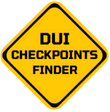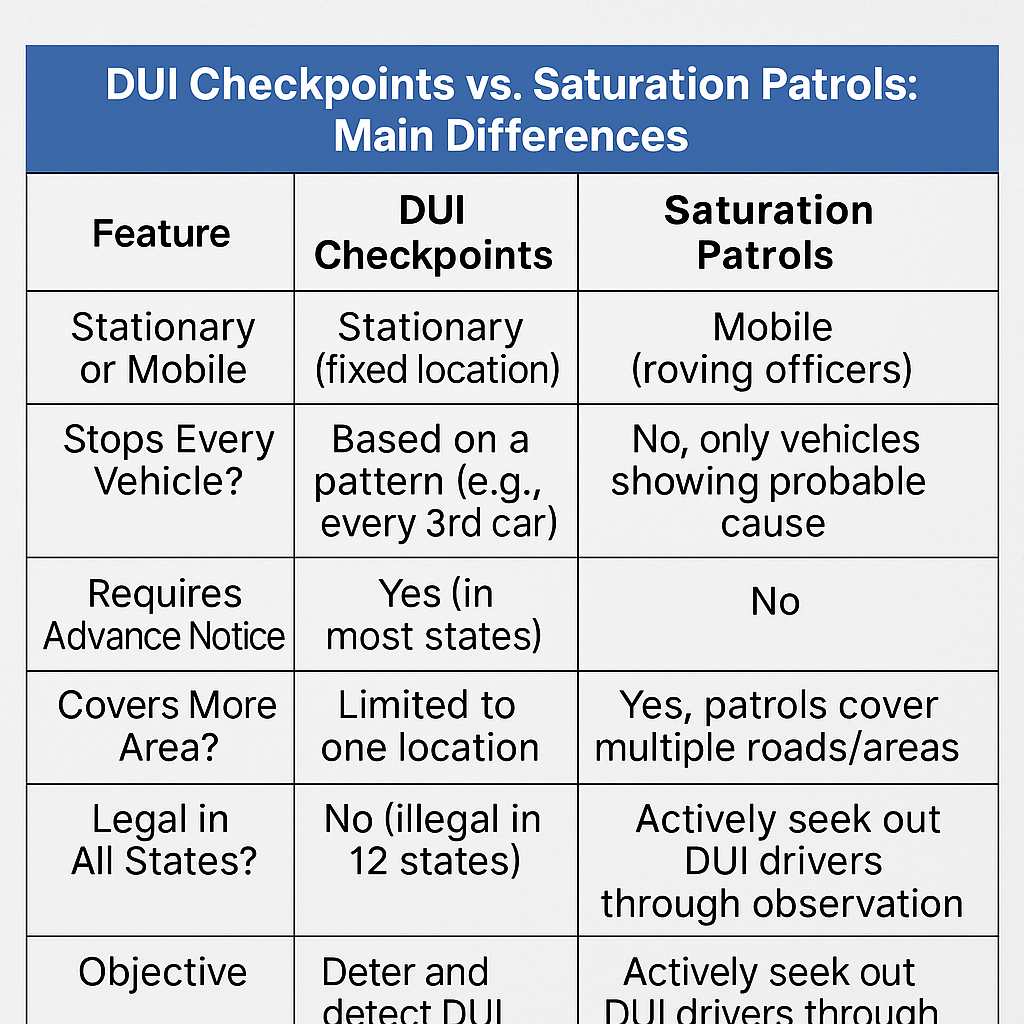Driving under the influence (DUI) is a serious offense with grave legal consequences, potential harm to others, and even fatal outcomes. Law enforcement agencies across the United States employ various strategies to detect and deter impaired drivers, and two of the most common methods are DUI checkpoints and saturation patrols.
But what exactly is the difference between the two? And how do they affect drivers like you?
Let’s explore everything you need to know about DUI checkpoints vs. saturation patrols, including how they work, their legal basis, and how to stay informed.
What Are DUI Checkpoints?
Also known as sobriety checkpoints, DUI checkpoints are predetermined locations where law enforcement briefly stops vehicles to check for signs of intoxication or impairment due to alcohol or drugs.
At these checkpoints:
- Officers stop vehicles based on a predetermined formula (e.g., every 3rd or 5th car).
- They observe the driver’s behavior, look for the smell of alcohol, slurred speech, or bloodshot eyes.
- If suspicion arises, they may request the driver to take a field sobriety test or a breathalyzer.
✅ Key Features of DUI Checkpoints:
- Must be announced in advance in many states.
- Locations are carefully selected for safety and effectiveness.
- Not allowed in all states (currently 38 states plus D.C. permit them).
- Operate based on legal guidelines to protect your Fourth Amendment rights.
🚥 Want to find DUI Checkpoints in your area? Visit DUI Checkpoints Finder for up-to-date locations and tips.
What Are Saturation Patrols?
Saturation patrols, sometimes called roving patrols or targeted enforcement operations, involve increased police presence in specific areas known for high DUI rates or past incidents.
Unlike checkpoints, officers in saturation patrols:
- Actively drive through areas looking for erratic or suspicious driving behaviors.
- Pull over drivers based on observed probable cause, such as:
- Swerving
- Speeding
- Running stop signs
- Delayed reactions
✅ Key Features of Saturation Patrols:
- Do not require advance public notice.
- Focus on mobile detection, allowing officers to cover more ground.
- Often occur during holidays, weekends, and special events when DUI rates tend to spike.
- Can be combined with checkpoints for maximum impact.
DUI Checkpoints vs. Saturation Patrols: Main Differences
| Feature | DUI Checkpoints | Saturation Patrols |
|---|---|---|
| Stationary or Mobile | Stationary (fixed location) | Mobile (roving officers) |
| Stops Every Vehicle? | Based on a pattern (e.g., every 3rd car) | No, only vehicles showing probable cause |
| Requires Advance Notice? | Yes (in most states) | No |
| Covers More Area? | Limited to one location | Yes, patrols cover multiple roads/areas |
| Legal in All States? | No (illegal in 12 states) | Yes |
| Objective | Deter and detect DUI drivers at one location | Actively seek out DUI drivers through observation |
Are These Tactics Legal?
Yes, both strategies are legal, but there are constitutional limitations to how DUI checkpoints are conducted.
DUI Checkpoints:
- Must follow strict protocols to comply with the Fourth Amendment (protection against unreasonable searches).
- Must minimize intrusion and bias, and be conducted fairly.
- Signs and lights must clearly indicate an official checkpoint.
Saturation Patrols:
- Officers need reasonable suspicion or probable cause to pull someone over.
- There is no requirement to publish or disclose the operation ahead of time.
⚠️ Important: If you feel your rights were violated during a DUI stop or arrest, consult a DUI attorney immediately.
How Can Drivers Stay Prepared?
The best way to avoid DUI arrests is simple: Don’t drive under the influence. But to stay informed and aware of law enforcement activity, you can:
- Use local DUI checkpoint alerts to know when and where checkpoints will occur.
- Follow traffic laws and avoid any behavior that may be viewed as suspicious.
- Plan ahead when attending events with alcohol—designate a driver, use rideshare apps, or stay overnight.
- Visit DUI Checkpoints Finder regularly to check for upcoming checkpoints in your area.
Which Is More Effective?
Both strategies have strengths and weaknesses:
- DUI checkpoints are visible deterrents, creating awareness and encouraging responsible behavior.
- Saturation patrols are more flexible and targeted, often leading to more DUI arrests due to focused enforcement.
Many law enforcement agencies use both in tandem during high-risk periods (like New Year’s Eve, Fourth of July, or Labor Day weekends) to maximize safety and reduce impaired driving.
Final Thoughts
Whether you’re just a concerned driver or someone who’s had a brush with law enforcement, it’s crucial to understand the difference between DUI checkpoints and saturation patrols.
✅ DUI checkpoints involve stationary, planned stops with public notice, aimed at deterrence.
✅ Saturation patrols are mobile, observation-based operations targeting erratic drivers.
Both serve the same purpose: to keep roads safer for everyone.
🚥 Stay informed. Stay safe. And most importantly, never drive under the influence.
Use DUI Checkpoints Finder to stay updated and protect yourself and others on the road.




